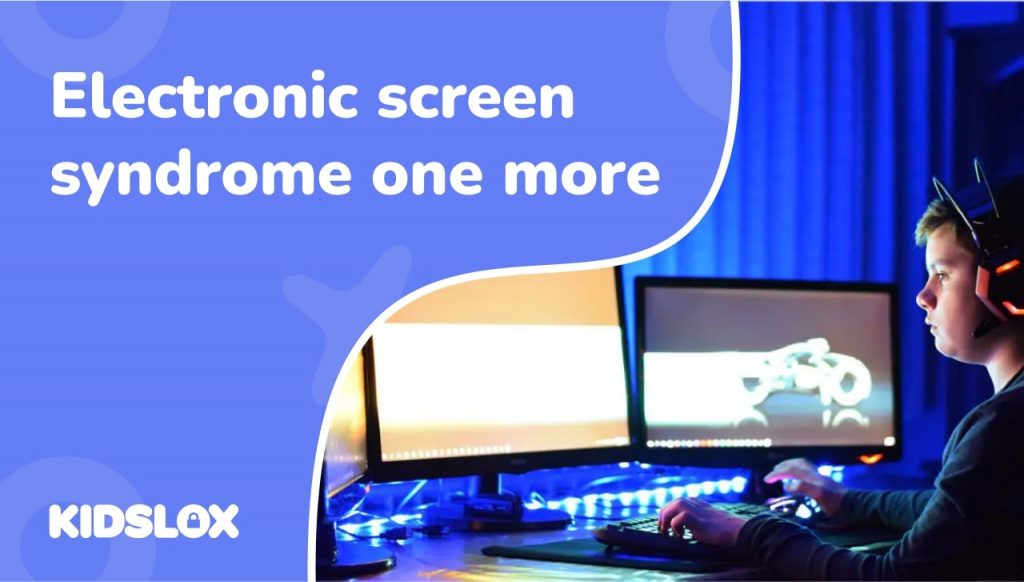A guide to the signs of iPad addiction and how to create healthy screen habits at home.
If you take a quick trip around popular parenting forums, it won’t take long to discover threads where members are discussing – and despairing(!) – over their children’s apparent iPad addictions. Queries like ‘what do I do if my child is addicted to my iPad?’ are common.
In theory, iPads make a great tool for learning, and entertainment – especially if you’re travelling or perhaps just need five minutes of time-out to complete household tasks. However, the ease of entertainment can prove too much of a lure for some children, causing family arguments and diverting attention away from chores, homework and face-to-face socialising.
Presumably you also landed on this blog for the same reason. To help recognise some of the signs that your child may be developing an unhealthy relationship with their iPad or digital device, here are some signs that psychologists recommend parents be aware of: .
Child screen addiction symptoms to look out for
- Withdrawal – emotional and physical.
More commonly associated with hard drug and alcohol addictions, being too dependent on anything can result in signs of withdrawal if the item is taken away. If your child is visibly anxious, irritable or down after the device is removed, this could point to an unhealthy relationship with the iPad. - Distance from the things they love.
If you’ve noticed that your child isn’t showing the same enthusiasm for the weekly trip to the swimming pool or playing football with friends – and they’re spending increasing amounts of time on their electronic devices, keep an eye out for other signs. - Increasing time and pushing boundaries.
At one point, a quick game or view of their favourite YouTuber’s latest upload might have satisfied their iPad itch, but if you notice that the time they spend online is increasing, it’s something to keep an eye on. - Melting down.
Every kid has tantrums, but those who are finding it difficult to spend time away from their iPad, or display extreme reactions to its removal, may be overdoing it. - Lying.
Sneaky, deceptive behaviour to gain access to their iPad, or not telling the truth about the amount of time they’ve been on is another sign to watch out for. - Using the iPad to control emotions.
If you notice a shift in mood when your child gains access to their device, it might signal that they’re over dependent on it to remain upbeat.
Is using an ipad bad for children?
The risk of screen addiction for young people using digital devices like iPads is very real according to researchers like scientist and author, Dr Nicholas Kardaras. In an article in The New York Post, addiction expert Kardaras likened screens to ‘digital heroin’ citing research that demonstrated the effects of screens on children’s brains to drug addiction. Kardaras also detailed anecdotes from concerned parents who witnessed their children spiral quickly from using the iPad for occasional educational games to full blown video game addiction.
When it comes to iPad use with very young children, the colours, patterns and instant gratification of making things happen on screen is a lot for their developing minds to handle. Small kids often find changing activities a challenge, and many parents report that their child will have a tantrum whenever the device is taken away. It’s not their fault, and they’re not being naughty. According to Dr. Dimitri Christakis, Director of the Centre for Child Health, Behaviour and Development at Seattle Children’s Research Institute, the dopamine response in a child’s brain after they’ve been exposed to screen time makes it very difficult for them to turn their attention to a different task. Furthermore, kids lack the maturity of emotional response to regulate themselves.
Aside from the potentially addictive effects of iPads, lack of physical play and exercise is concerning other health professionals. In relation to the general trend toward more sedentary lifestyles across the globe, advice issued by The World Health Organisation (WHO) in 2019 stated, “Children under five must spend less time sitting watching screens, get better quality sleep and have more time for active play if they are to grow up healthy.”
But when it comes to definitive research that answers the question, ‘are iPads bad for you?’, many researchers are still on the fence. Evidence shows that since the release of the first smartphone, rates of childhood depression have increased year on year. However, research that demonstrates cause and effect isn’t as readily available.
Of course, on the flip-side, there are studies to show that iPad use can have positive benefits too. Research published in the Journal of Developmental Psychology showed that children who used iPads to read tested better for memory and comprehension with researchers pointing to screens’ colourful and interactive displays and graphics being more stimulating that text on a page.
The American Academy of Paediatrics has also published guidelines to help parents make research-based decisions when it comes to setting screen time limits with their children. They are as follows:
- Before the age of 24 months: no screen time at all except for video calls.
- Between the ages of 2-5: no more than 1 hour a day.
A useful guide to refer to is the AAP Family Media Use Plan, which sets out recommendations in more detail, and offers helpful advice for parents to set boundaries at home.
With so many examples of screen time proving problematic for children’s health and development, many parents are left asking the question of how to stop addiction to iPads?
Whether you’ve spotted the signs of iPad addiction in your child, or you’re worried about introducing a device for fear of one developing, there are some practical steps you can take to help limit the detrimental effect screens can have on young minds.
Set boundaries together
Many child psychologists agree that working with children to set the rules together can help them feel a part of the process and more likely to comply with your requests for less time on the iPad.
For example, sit down and agree what time works best for their hour of gaming or scrolling and then put the rules on display at home for easy reference. We have advice here on how to draw up a mobile phone contract at home.
Don’t stop screen time mid game
Pick your battles. It’s not going to go down well if you snatch the iPad mid game. Introduce countdowns and let your child set the time prompts that they want- whether it’s 5 or 10 minutes before game over. This technique gives the child time to prepare mentally for the switch off, and allows them to feel like they have some autonomy in how – and when – they stop playing.
Stay strong
With the best intentions in the world, arguments are inevitable. There will always be the calls for ‘just one more game’ and ‘ten more minutes’. Stay strong and don’t reward these behaviours to minimise patterns of disobedience. Consistency is key.
Set an example
Examine your own habits. Are you spending a lot of time on your phone or iPad around the kids? If so, you’re reinforcing the idea that screen time during family time is ok. Kids learn by watching, so set the example you want them to follow and allow yourself a digital detox.
Reward charts
If your child complies with the rules, consider rewarding them with a sticker chart or similar points system. If there’s the opportunity for them to do something they love that’s not screen related at the end of the month, it can be a great motivator to keep up the good work.
Never before bed or during mealtimes
Whatever schedule you decide on, most researchers agree that phones and iPads should always be avoided at mealtimes and definitely shut down and put away at least one hour before bed. This allows busy young minds the chance to unwind and minimise episodes of interrupted sleep.
Give them something fun to do
Always line up an exciting ‘real world’ activity to do once screen time ends. It could be a tasty thing they like to eat, or a trip out to a favourite outdoor activity.
Kidslox can help
Time limits, content restrictions and other controls can all be easily coordinated via the KidsLox app. There are plenty of small tweaks you can make to the way your children use their devices that can also discourage their use and help break unhealthy patterns.
For more help and advice on how to beat iPad addiction in your kids and what to do if you suspect they have unhealthy habits, check out the resources below for more hints and ideas.
Apple’s Parental Controls Guide





